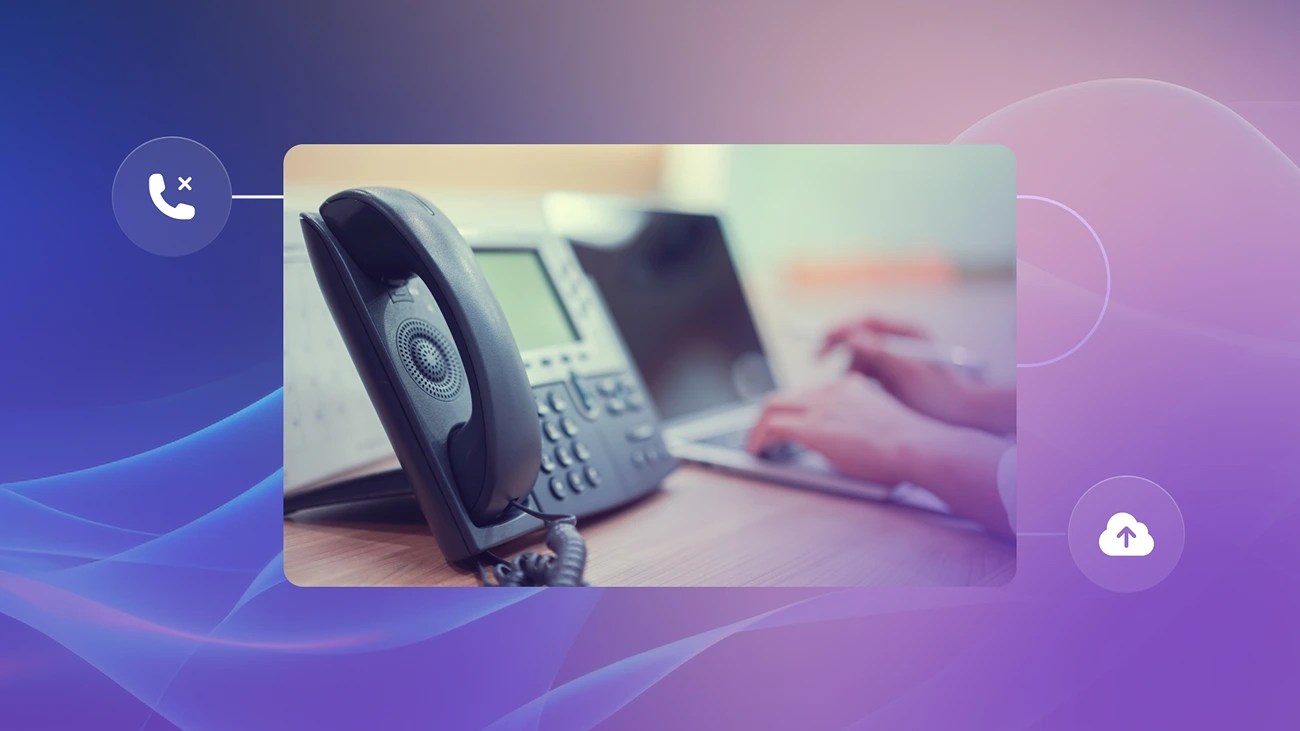When your business phone line rings, it’s easy for employees to see it as just one more task. You’re balancing a lot, and if you miss the call, they’ll call back if it’s important, right?
Unfortunately, the data is clear. Missed calls often translate to lost opportunities.
Missing a random call here and there may seem minor, but when you add them up, they actually represent measurable losses in sales, customer retention, and even your brand reputation.
Revenue can slip through the cracks when businesses fail to answer customer calls. In this post, we look at the real impact of unanswered calls — and what you can do to prevent them.
Understanding the Cost of Missed Calls
Most business owners know that unanswered calls may mean lost sales opportunities, but it’s not just a single sale that you could be missing out on. Let’s look at the overall cost of a customer you don’t connect with.
Direct financial loss
Each missed call has the potential to translate to an immediate lost sale. If someone is calling to book an appointment, make a reservation, or make a purchase, for example, they may not be willing to call back again — especially if they’re a first-time customer.
The average value of inbound calls can be difficult to track precisely and varies by industry. However, these are the industry benchmarks of the value of inbound calls:
- Restaurants: $25–$30 per call
- Home services: $300–$400 per call, though this could be much higher
- Professional services: $300–$700 per call
- Medical: $100–$200 per call
- Hotels: $450–$550 per call for multi-night stays and upsells
- Online retail: $145–$155 per call
Let’s assume a 50% close rate. Even 100 missed calls a month could cost thousands in unrealized potential revenue. If you miss five calls a day at your restaurant, therefore, and you’re typically open five days a week, you’re looking at up to $1,500 per month in sales that slipped through the cracks.
Lost lifetime value
A missed call could cost you more than just the immediate sale; there’s a chance that it could result in losing the customer for good.
The average lifetime customer value can range from $200 to $1,000, depending on the industry. If your hair salon misses a call, it might cost you a $75 appointment, along with the five additional appointments per year for an average of five years that your clients typically stay with you.

And then you have to factor in other businesses that may have come from that lost client, including word-of-mouth referrals and cross-selling opportunities. That client now won’t refer their three friends your way or occasionally upgrade to highlights in addition to a cut and style.
All of these opportunities disappear when the first incoming call goes unanswered, resulting in a significant long-term financial impact.
Marketing dollars wasted
Calls don’t come in on their own. Most businesses invest a significant amount in marketing to build brand awareness, get their names in front of customers, and get people calling. Every missed call ultimately represents marketing spend gone to waste.
If you pay for ads, listings, or campaigns that drive calls, each unanswered phone call nullifies that investment. By our estimates, businesses can quickly lose up to 30% of return on investment from contact-focused paid channels due to poor call handling, especially since an estimated 37% of digital marketing leads will convert on their call.

Damaged reputation and customer trust
A recent survey found that 82% of callers won’t leave a voicemail and will instead call a competitor if you fail to pick up. This finding is consistent with external data from sources like Forbes and past call center analyses, which show that around 80% of users would jump ship after an unanswered call.

And you’re not just missing first-time customers looking for a quick solution, though that’s worth considering. Missed calls also erode trust, as consumers may worry about poor service or a lack of reliability. They may feel that this means the service provider doesn’t care about delivering a good experience.
Keep in mind that online reviews and word-of-mouth about always-ringing phone lines can amplify this perception. Once again, this can result in a cost that exceeds the initial sale, negatively impacting customer loyalty and your annual revenue.
How Missed Calls Impact Different Industries
Missed calls can have very real and very significant impacts on businesses. The actual impact depends on the industry and even differs from business to business.
Ultimately, voicemail and missed-call statistics vary, with many being vendor-published. This can make it challenging to offer definitive facts, but we’ve compiled data for the benchmarks below.
| Industry | Avg. Call Value (US$) | Monthly Impact (Assuming 100 Missed Calls) | Examples of Revenue at Risk |
|---|---|---|---|
| Restaurants | $25–30 | $1,300–1,500 | Catering, reservations, takeout |
| Home services (varying significantly by job type) | $300–400, but sometimes upward of $1,200 | $15,000–20,000, but sometimes upward of $60,000 | HVAC, plumbing, electrical jobs, painting, small and large repairs |
| Professional services | $300–700 | $15,000–35,000 | Legal consults, accounting |
| Medical practices | $100–200 | $5,000–10,000 | Missed patient appointments |
| Hotels | $450–550 | $22,500–27,500 | Direct bookings for multi-night stays, upsells |
| E-commerce, depends significantly on the product | $145–155 | $7,300–7,800 | Abandoned high-value orders |
| Retail, depends significantly on the product | $40–60 | $2,000–3,000 | Missed in-store pickup inquiries |
| Fitness and wellness | $15–25 | $800–1,300 | Lost memberships or class bookings |
The Indirect Costs You Don’t See
The direct costs can be humbling, but it’s also important to account for indirect costs that you may be overlooking. These can hurt small and medium-sized businesses (SMBs), especially those that aren’t relying on call centers to assist with inbound calls.
Missed opportunities during peak or off-peak hours
Small businesses can easily miss 20–30% of incoming calls during weekends, after-hours windows, and even during business hours when employees are on a lunch break. And sometimes, your staff may get overwhelmed during peak hours when they’re helping other customers.
These can be high-intent times when customers are ready to buy, not just browse. And if you’re not answering, they’ll call elsewhere.
Operational strain
Follow-ups and callbacks can put you on the road to inefficiency quickly. Staff returning missed calls may spend time chasing leads that have already gone elsewhere or grow frustrated, turning from warm to cold.
Ultimately, missed calls increase follow-up work and can disrupt daily operations, so avoiding them in the first place is the way to go.
Data blind spots
Without consistent call capture, teams lose key insights about peak demand, caller intent, and marketing attribution. Missed calls directly translate to lost analytics and potentially less-accurate metrics, which means there’s real potential for poor forecasting and resource allocation.
How to Prevent Missed Calls
The takeaway so far is clear: Don’t miss calls. But we know that’s easier said than done, so let’s take a closer look at what SMBs can do to lower their missed call rate (and boost their revenue).
Track and measure missed call data
It’s important to review missed phone call reports regularly to understand when and why you’re missing calls. You want to identify:
- Peak times when you don’t have enough staff for proper call management
- Call volume trends, including whether people are calling after-hours or during lunch breaks
- Call abandonment reasons and why customers aren’t calling back or leaving voicemails
You can use this data to adjust staffing or implement automation with an answering service for small businesses to accommodate customer needs.

Improve staffing and availability
Once you know when you’re missing calls, you can adapt. Remember, an answered call isn’t just a captured lead — it’s an immediate positive first impression that drives the entire customer journey and builds trust. Schedule coverage around high-traffic periods. Some customers, for example, may be more likely to book appointments during their lunch hour or evenings when they’re out of the office.
You can also train team members to handle multiple communication channels effectively, including live chat and email, to address all customer concerns.

Implement call forwarding or overflow solutions
Sometimes it’s just not possible to have in-house, on-premises team members handle all incoming calls, especially during high-volume periods. You can forward calls to your mobile device while you’re out of the office to remote agents or even use third-party answering services.
You can configure your VoIP phone system to set up dynamic routing, ensuring that no call goes unanswered. During your lunch break, for example, you might have calls go to your mobile device, but in the evenings, you may have calls routed to a 24/7 answering service instead.
Even though it’s an additional cost, answering services are often well worth it for the recouped revenue.

Leverage technology and automation
Technology and automation can be a game-changer, especially for small businesses with limited staff. Integrate tools like virtual receptionists or AI-powered answering systems to automatically greet customers, resolve basic questions, and direct calls effectively.

VoIP and AI-powered answering systems like XBert are engineered for quick and seamless integration with your existing business tools, including CRMs and calendars. This approach minimizes setup friction, reduces downtime, and allows you to use automation to capture valuable lead data.
AI receptionists and advanced IVR can automate tasks like appointment scheduling, call routing, and FAQ responses. These options ensure 24/7 coverage and are particularly valuable in industries where response time is directly tied to conversion.

While AI doesn’t completely replace human customer service, it’s a good way to supplement your team’s needs and address a high volume of customer concerns in a time- and cost-effective way.

Meet XBert: The AI Assistant That Ends Missed Calls
Interested in incorporating quality AI into your customer journeys to slash your missed call rates?
Meet XBert!
XBert is Nextiva’s AI virtual receptionist and was designed to ensure no call (or customer) slips through the cracks.
With business-specific training and human-like voice responses courtesy of advanced conversational AI, XBert delivers a consistent, professional customer experience while capturing every opportunity your marketing creates, thanks to capabilities like:
- 24/7 availability: Handles calls, texts, and chats instantly, even after hours
- Real-time scheduling: Integrates with your calendar to book, confirm, and reschedule appointments automatically
- Smart routing: Transfers complex inquiries to your team with full context, reducing hold times
- CRM and analytics integration: Captures lead data, updates records, and provides visibility into every interaction
Whether it’s a late-night plumbing call or a new dental consultation, XBert is ready to make sure your business never misses a chance to grow.
Your AI receptionist that never misses a call.
XBert is your AI answering service that handles calls, texts, and chats 24/7. It greets customers, books appointments, and captures leads while your business grows.

















 Business Communication
Business Communication 







![Best Answering Service for Small Business in 2026 [Top 6 Reviewed]](https://www.nextiva.com/cdn-cgi/image/width=850,height=478,fit=cover,gravity=auto,format=auto/blog/wp-content/uploads/sites/10/2025/10/Contact-Center-Photo-block_wireframe-Blue.webp)
